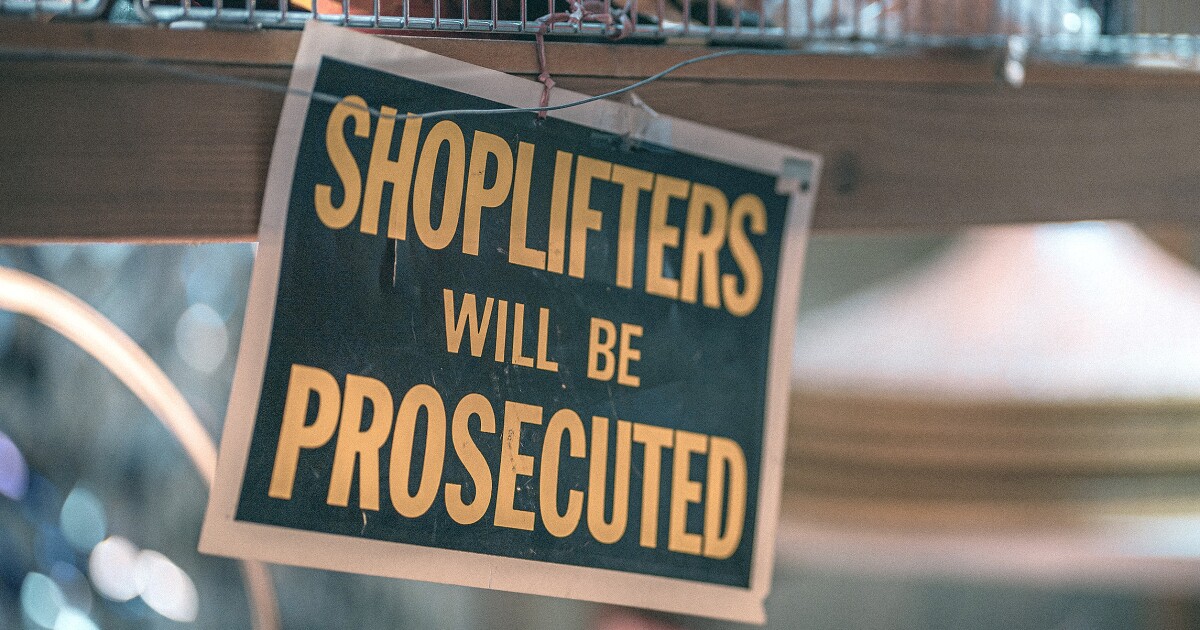

Retailers across the country have been getting pummeled by theft both in-store and online — but a new report suggests the same businesses that blamed organized theft for cutting into their profits may have actually been overstating how much is stolen as cover for internal issues such as employee theft.
During this year’s first quarter earnings, major retailers blamed their shrinking margins on organized gangs hitting up stores as well as a large uptick in smash-and-grab jobs. The topic is likely to resurface when these same companies start reporting their second-quarter earnings next week.
UP FOR DEBATE: TRUMP, DESANTIS, AND 2024 GOP HOPEFULS’ STANCES ON ABORTION
But unforced errors on the retailers’ part and claims that they are being robbed by their own employees are contributing to the issue, according to CNBC, citing two sources who advise major retailers.
“Some companies have since identified theft from employees as a major contributor to losses, even as they blame external theft in public,” one source, who was granted anonymity by the outlet, said.
Retail analyst Neil Saunders said while “shrink has been going up,” sometimes it’s “very difficult to unpack how much is down to theft and how much is down to internal retailer issues and stumbles.”
Retail shrink refers to the difference between how much inventory a retailer is supposed to have on their balance sheet and how much they actually have. Shrink can be anything from shoplifting to employee theft, cashier error, to damaged goods sent by the vendor. Shrink is difficult to pinpoint, and Saunders sometimes believes that theft and shoplifting are a convenient catchall for other issues.
“It is a problem, we know that, it does take money off margins, we know that, but there’s too much opacity in the way in which it’s reported, and it is being partly used as an excuse for generally bad performance,” he said.
While there is no data that says employees steal more than shoplifters, it may be easier for employees because they know where a store’s security weaknesses lie and can easily case the space for potential problems. On top of that, in-house theft can go unnoticed for a long period of time because it’s easier to hide.
Internal theft is also a huge issue in warehouses or where online orders are prepared. An employee may know the person picking up the order or are working in tandem and add extra items to the bag.
Last month, former Amazon warehouse operations manager Kayricka Wortham was sentenced to 16 years in prison after she and two friends stole $9.4 million between August 2020 and March 2022. Wortham used her position at the Georgia warehouse to submit more than $10 million in invoices for fake vendors. Prosecutors claimed Worthman had her employees add the fake vendor information into the system unknowingly.
“Once the information was entered, Wortham approved the fake vendors, enabling them to submit invoices,” prosecutors from the Northern District of Georgia said. “Wortham and co-conspirators then submitted fictitious invoices to Amazon, falsely representing that the vendors had provided goods and services to Amazon. Wortham approved the invoices, causing Amazon to transfer millions in fraudulent proceeds to bank accounts controlled by her and her co-conspirators.”
While there are many documented cases of employee theft, New York City small business owner Deborah Koenigsberger told the Washington Examiner that the claims made in the CNBC report do a real disservice to shop owners like herself.
CLICK HERE FOR MORE FROM THE WASHINGTON EXAMINER
“All of their conjecturing doesn’t mean a damn thing,” she said. “You’re conjecturing it. I’m living it. You have no proof of what you’re saying. None. And I am living proof of what I am saying.”
Koenigsberger, a former model who owns a boutique and a thrift store in New York’s Flatiron district, said she has seen many businesses go out of business because of brazen theft and a rise in crime, and adds that while there may be some cases of employee theft, the majority of retailers and their staff are honest and just trying to survive.





